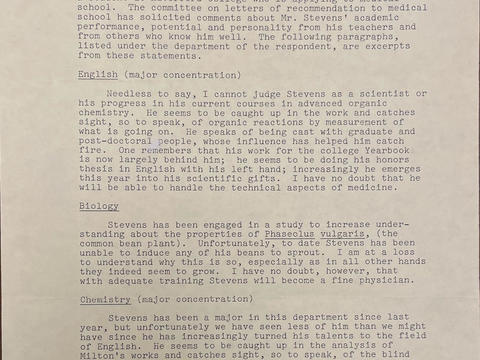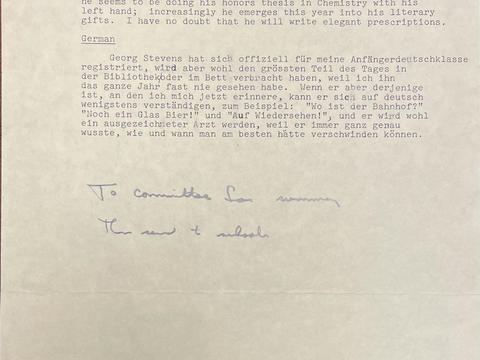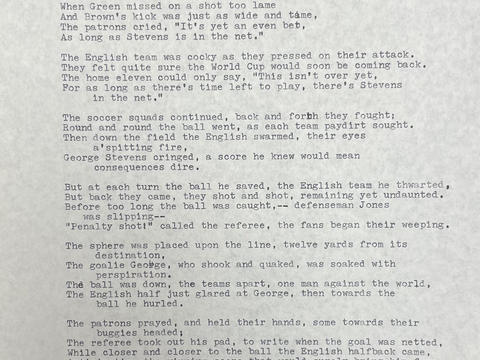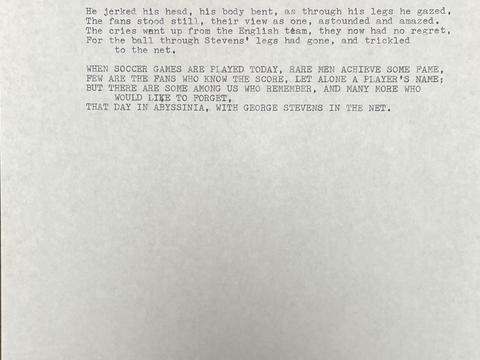George Stephens: The Non-existent Haverford Legend
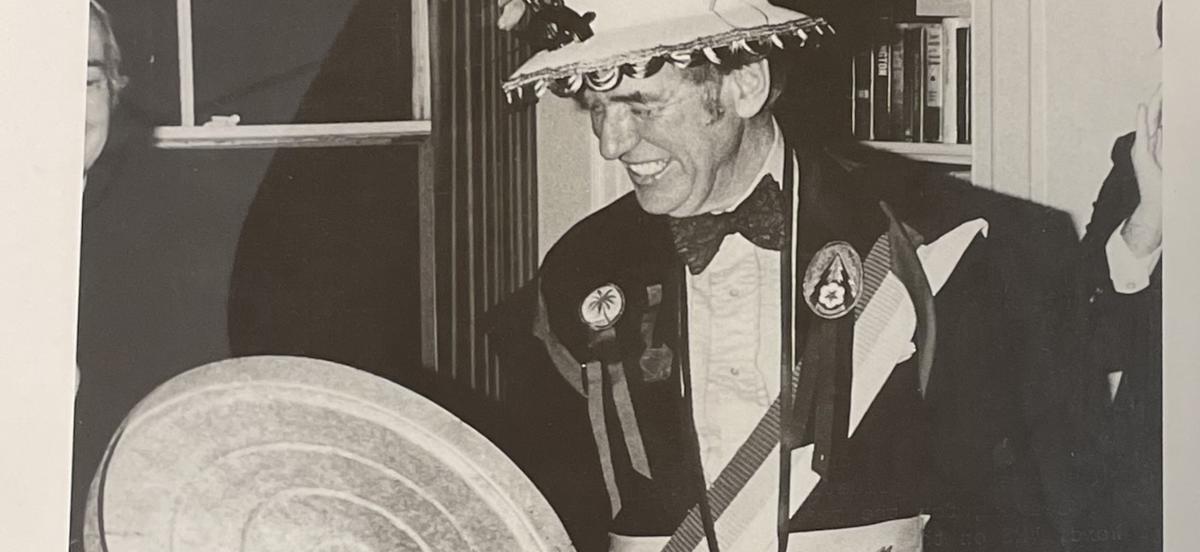
President John R. Coleman receiving the ‘George Stephens Unmentionable Award’ at the 1977 Memorial Dinner
Details
In this post, George Tran '27 explores the legend of George Stephens, a Haverford College enigma. George works in Quaker & Special Collections as a Documenting Student Life Project student liaison.
Current students at Haverford College may not be familiar with the name George Stephens. However, Stephens’ reputation used to reign at the college back through the 1970s and 1980s, with students, faculty members, and staff fervently disputing his identity.
George Stephens was not a real person but a fictitious character invented by a group of Haverford students around 1969. The story goes, one day, Jim Booth (class of 1973), Roger Easton (class of 1972), David Sloane (class of 1972), Ron Norris (class of 1971), Bob Schwartz (class of 1971), Carl Tannenbaum (class of 1971), and Steve White (class of 1971) were studying for a history exam, and one of them asked "Who was George Stephens?” From there, the long-standing joke began.
Interestingly, Stephens’ name was spelled in multiple ways, such as "Stevens," "Steevens," "Stevinz," etc. In the same vein, there were multiple tales surrounding his identity that often contradicted one another.
However, most sources in the archive agree that Stephens played as Ethiopia's goalkeeper in the 1876 World Cup final soccer match against England. Due to negligence or incompetence, Stephens allowed the ball to roll between his strangely “bowed legs” into the net, causing his team’s defeat in the last few minutes of the game.
Some Haverford scholars have suggested that following the embarrassing error at the fateful soccer match, Stephens moved to Philadelphia, probably due to his Quaker heritage. Nonetheless, his connection with Haverford College is rather ambiguous, which prompts the question of why Haverford community members became so invested in Stephens in the first place. Well, it is thanks to the tremendous efforts made to aggrandize the legend.
In 1969, a group of seven Haverford students created the George Stephens Memorial Association to record all the events in the life of the fictitious George Stephens. One year later, to commemorate the first anniversary of the association, George Stephens enthusiasts convened at the first Memorial Dinner. Among the invited guests was the then President of Haverford College, John R. Coleman. At the 1977 Memorial Dinner, President Coleman was presented with the “George Stephens Unmentionable Award.” The Memorial Dinners became a recurring tradition that lasted until 1986.
A key figure who propagated campus-wide interest in George Stephens was Edwin B. Bronner, former Professor of History and Librarian of the College. He was the first curator of the George Stephens Memorial Collection in 1975. Housed in the Magill Library (now called Lutnick Library), the collection contained various donated memorabilia related to the life of George Stephens. These artifacts were allegedly “found” all over the world. The collection continued to be active until as late as 1989, before Bronner retired from his position as curator of the Quaker Collection in 1990.
In 1977, one Haverford student, Jonathan Stevens (Class of 1982), wrote a nine-page research paper on George Stephens, titled ‘That Day in Abyssinia, with George Stevens in the Net,’ for a history class about the art of biography. Stevens’ paper, which summarizes existing theories about Stephens’ involvement in the 1876 World Cup final, illustrates the approach with which Haverford scholars constructed the lore — the opposite of facetiousness. Perhaps it is precisely this professional and scholarly treatment of this made-up character that explains his irresistible appeal.
– George Tran ‘27

